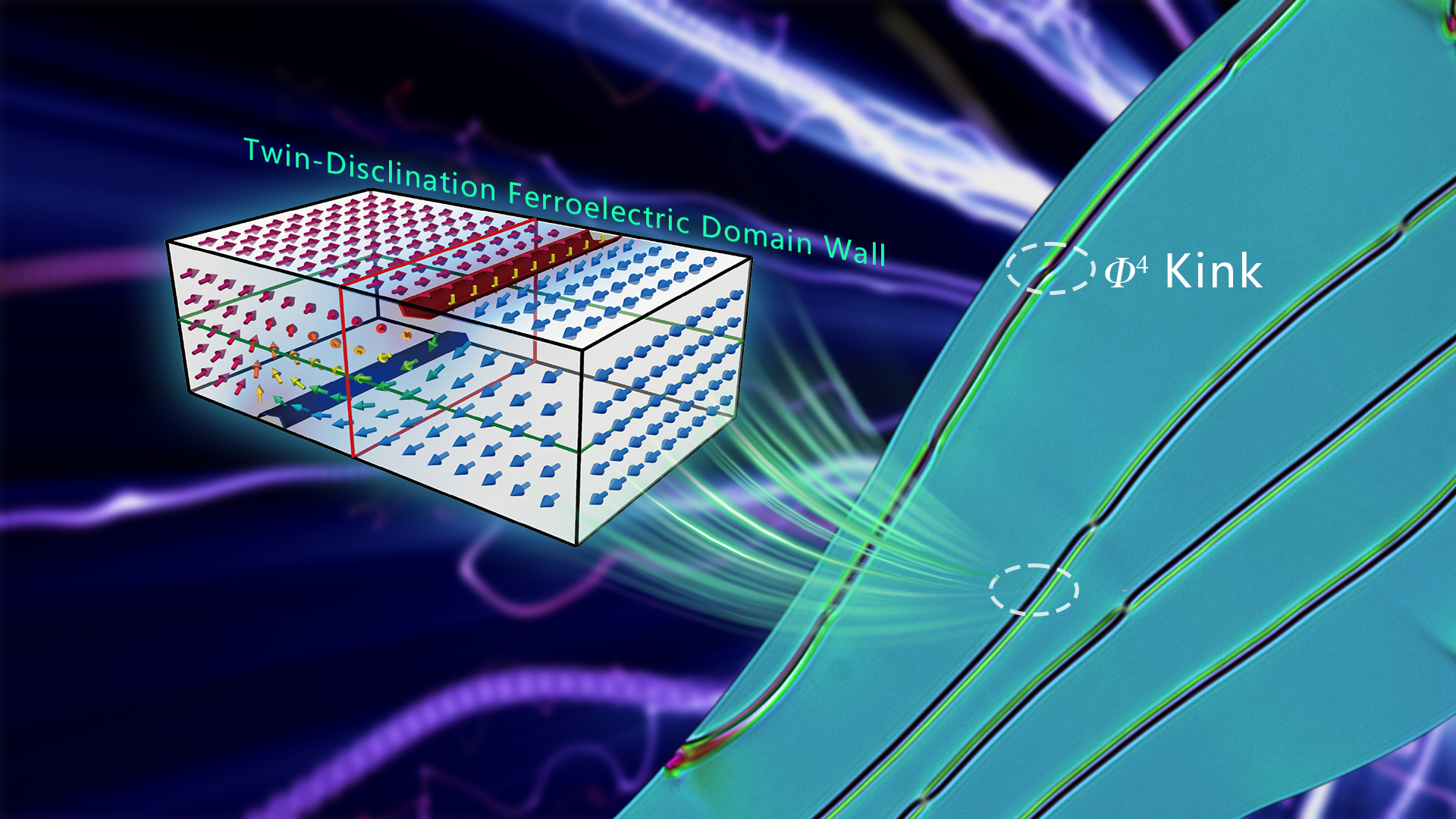Nematic liquid crystals are soft matter made of rod-like molecules that exhibit the optical properties of crystals and the fluidity and responsiveness of liquids. Their applications have changed our lives, ranging from the display screens of televisions, computers, and smartphones to chips for optical telecommunications. These nematic liquid crystals are typically non-polar.
A major breakthrough in liquid crystal research occurred in 2017 with the synthesis of liquid crystals exhibiting spontaneous polarization, later confirmed as the ferroelectric nematic liquid crystals predicted by Nobel laureate Max Born over a century ago. These novel polar liquids exhibit unique physical properties, including spontaneous polarization, higher dielectric constants, and lower driving voltages, promising revolutionary applications in optoelectronic devices, new data storage, topological photonics, and quantum optics.
Separating domains with different polarization directions, π domain walls are widely present in ferroelectric materials. Understanding the structure of domain walls is not only a fundamental physics problem but also crucial for domain wall control, domain engineering, and applications in ferroelectric devices.

A research team led by Professor Qi-Huo Wei from the Department of Mechanical and Energy Engineering and the Center for Complex Flow and Soft Matter Research at the Southern University of Science and Technology (SUSTech), in collaboration with Professors Mingjun Huang and Satoshi Aya from the South China University of Technology and Professor Rui Zhang from the Hong Kong University of Science and Technology (HKUST), has conducted a study on the domain walls in ferroelectric liquid crystals. Their work has led to the discovery of novel non-Ising chiral domain walls and Φ4 kinks.
Their paper, entitled “Chiral π domain walls composed of twin half-integer surface disclinations in ferroelectric nematic liquid crystals”, has been published in the Proceedings of the National Academy of Sciences (PNAS).
The researchers discovered that in ferroelectric nematic liquid crystals, the π domain walls exhibit multi-level topological structures. These domain walls are composed of twin half-integer surface disclinations; their degenerate geometric arrangements lead to the formation of Φ4 kinks and anti-kinks. Notably, these kinks divide the domain walls into left-handed or right-handed chiral regions, resembling a one-dimensional Ising chain. This hierarchical topological structure is fundamentally different from the Ising-type domain walls commonly seen in solid ferroelectric materials, and explains why field-driven polarization reversal always undergoes multiple steps.
This discovery of multi-level polar topology for domain walls in polar fluids highlights the significant impacts of symmetry breaking on structures and physical properties, and offers a guideline for engineering polar fluidic devices and topological photonics.
Shengzhu Yi, a joint Ph.D. student from the Department of Mechanical and Energy Engineering at SUSTech and the Department of Physics at HKUST, is the first author of the paper. Professor Qi-Huo Wei is the corresponding author, and SUSTech is the first affiliated institution.
Paper link: https://www.pnas.org/doi/10.1073/pnas.2413879121
To read all stories about SUSTech science, subscribe to the monthly SUSTech Newsletter.
Proofread ByYingying XIA
Photo ByYan QIU